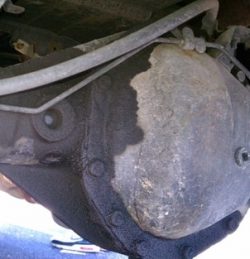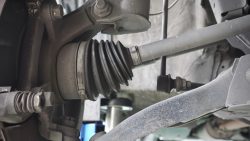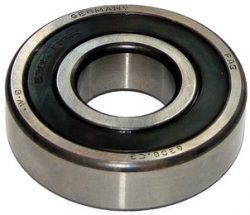Understanding Axle Shaft Replacement: A Comprehensive Guide
Axle shafts are crucial components in a vehicle’s drivetrain, transferring power from the differential to the wheels. Over time, axle shafts can wear out or become damaged, necessitating replacement. Here we discuss the intricacies of axle shaft replacement, its importance, and the process involved. Additionally, we will highlight the services offered by Houston Rebuilt Axles,demonstrating our expertise in axle rebuilds, including axle shaft and bearing replacement.
What is an Axle Shaft?
An axle shaft, also known as a half shaft or drive shaft, is a rod that connects the wheels to the differential gears in a vehicle. The primary function of the axle shaft is to transfer torque from the differential to the wheels, enabling the vehicle to move. There are two main types of axle shafts:
- Solid Axle Shafts: Found in many rear-wheel-drive and four-wheel-drive vehicles, these shafts are typically more robust and designed for heavy-duty applications.
- Independent Axle Shafts: Found in most front-wheel-drive and some rear-wheel-drive vehicles, these shafts are part of an independent suspension system, providing better handling and comfort.
Signs of a Failing Axle Shaft
Recognizing the signs of a failing axle shaft can prevent further damage to the vehicle. Common symptoms include:
- Clunking Noises: Unusual noises, especially when turning or accelerating, can indicate a worn or damaged axle shaft.
- Vibrations: Excessive vibrations while driving may be a sign of a bent or damaged axle shaft.
- Grease Leaks: Leaks around the CV joint boots can suggest a problem with the axle shaft.
- Difficulty Turning: Issues with steering, particularly when making sharp turns, can be related to axle shaft problems.
The Importance of Axle Shaft Replacement
A damaged or worn axle shaft can lead to severe drivability issues and compromise vehicle safety. Timely axle shaft replacement ensures:
- Smooth Operation: A new axle shaft restores smooth and efficient power transfer to the wheels.
- Enhanced Safety: Properly functioning axle shafts are essential for maintaining vehicle control and safety.
- Preventing Further Damage: Replacing a faulty axle shaft can prevent additional damage to the differential and other drivetrain components.
The Process of Axle Shaft Replacement
1. Diagnosis and Inspection
The first step in axle shaft replacement is a thorough diagnosis and inspection. This involves:
- Visual Inspection: Checking for visible signs of damage, such as cracks, bends, or grease leaks.
- Functional Testing: Testing the vehicle to identify any abnormal noises, vibrations, or handling issues.
2. Removing the Old Axle Shaft
Once the problem is confirmed, the next step is to remove the old axle shaft:
- Lifting the Vehicle: The vehicle is lifted using a jack or lift to access the axle shaft.
- Removing the Wheel: The wheel and brake components are removed to gain access to the axle shaft.
- Disconnecting the Axle Shaft: The axle shaft is disconnected from the differential and wheel hub, which may involve removing bolts, clips, or other fasteners.
3. Inspecting and Replacing Bearings
Axle bearings are critical components that support the axle shaft and allow it to rotate smoothly. During axle shaft replacement, it’s essential to inspect and replace axle bearings if necessary:
- Bearing Inspection: Checking the condition of the bearings for signs of wear, damage, or contamination.
- Bearing Replacement: If the bearings are worn or damaged, they are removed and replaced with new ones to ensure smooth operation.
4. Installing the New Axle Shaft
After the old axle shaft and bearings are removed, the new axle shaft is installed:
- Connecting the New Axle Shaft: The new axle shaft is connected to the differential and wheel hub, ensuring all bolts and fasteners are securely tightened.
- Reassembling Components: The brake components and wheel are reinstalled, and the vehicle is lowered back to the ground.
5. Testing and Verification
The final step is to test the vehicle to ensure the new axle shaft is functioning correctly:
- Test Drive: A test drive is conducted to check for any remaining noises, vibrations, or handling issues.
- Final Inspection: A final visual inspection is performed to ensure everything is properly installed and functioning.
Houston Rebuilt Axles: Your Trusted Partner for Axle Rebuilds and Replacements
Houston Rebuilt Axles specializes in axle rebuilds, including axle shaft replacement. Our comprehensive services ensure that your vehicle’s axle system is restored to optimal condition.
Services Offered by Houston Rebuilt Axles
- Expert Diagnosis: Houston Rebuilt Axles provides thorough diagnostic services to identify axle shaft and bearing issues accurately.
- Quality Replacement Parts: We use high-quality parts for axle shaft and bearing replacements, ensuring durability and reliability.
- Professional Installation: Our experienced technicians perform precise installations, adhering to industry standards.
- Comprehensive Rebuilds: Beyond axle shaft replacement, we offer complete axle rebuilds to address all aspects of axle performance.
For more information and to explore our services, visit Houston Rebuilt Axles.
Axle Shaft Replacement by Houston Rebuilt Axles
Axle shaft replacement is a vital maintenance task that ensures the smooth and safe operation of your vehicle. Recognizing the signs of a failing axle shaft and addressing the issue promptly can prevent further damage and enhance vehicle performance. Houston Rebuilt Axles offers expert axle rebuild services, including axle shaft and bearing replacements, ensuring your vehicle remains reliable and efficient. Trust our expertise to keep your vehicle’s axle system in top condition. Contact us today!



